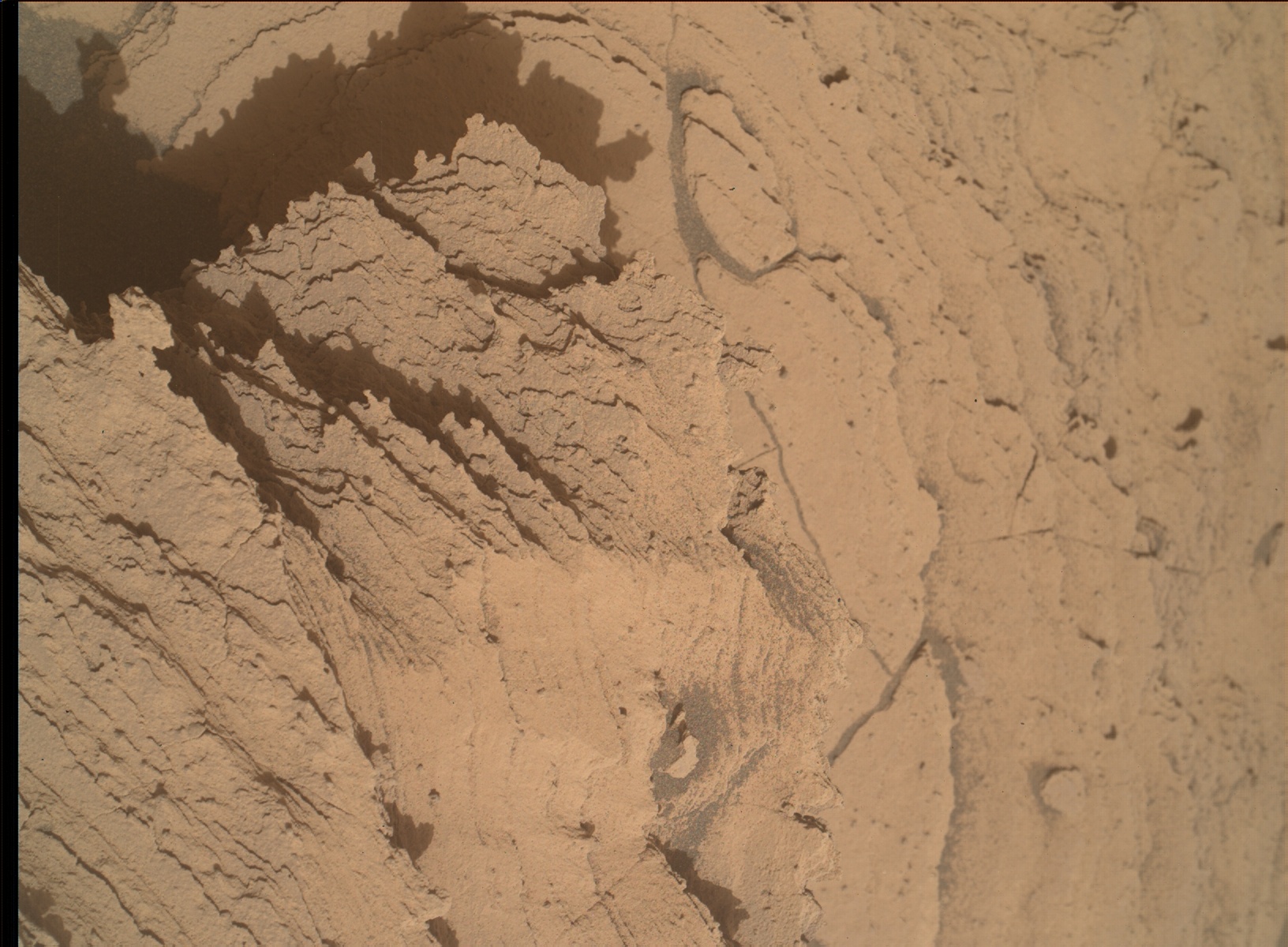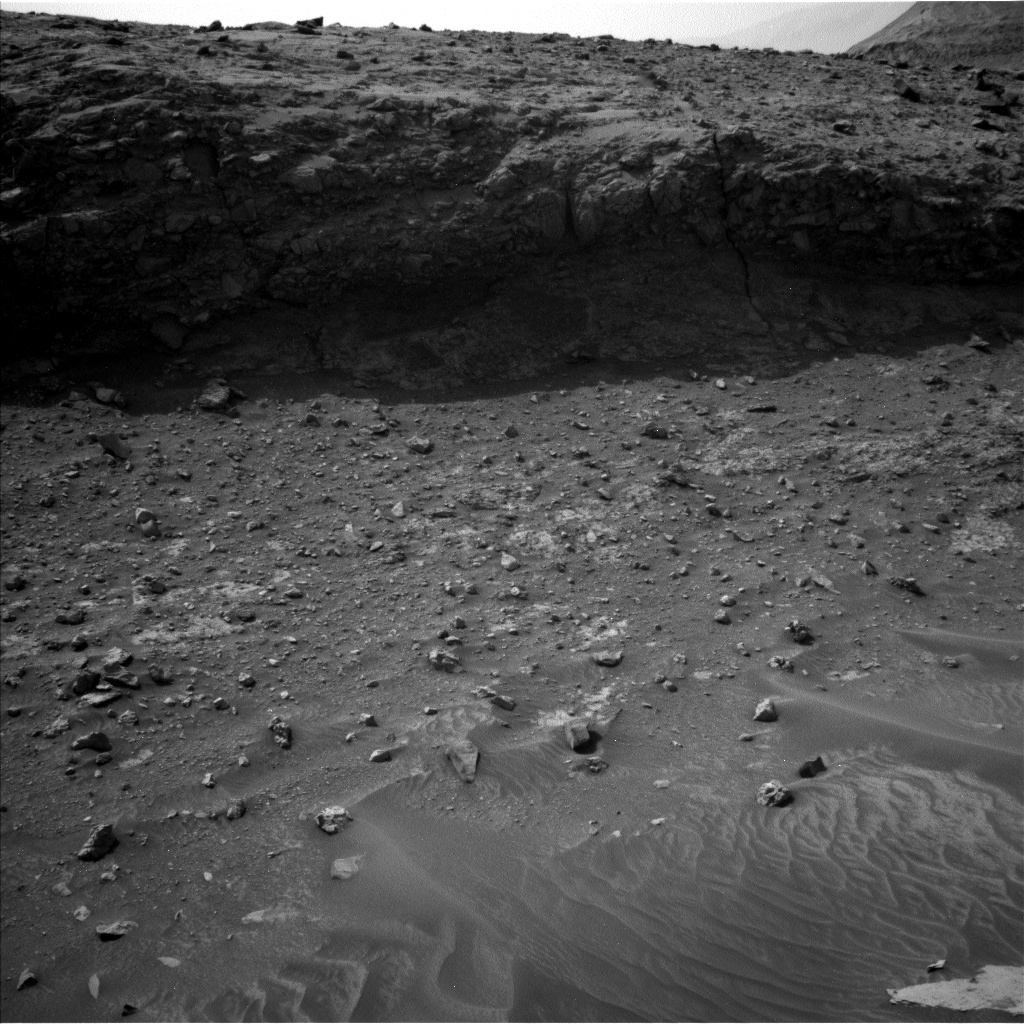3 min read

Earth planning date: Wednesday, September 27, 2023
Our exploration of the light-and-dark-toned bands continues today as Curiosity has completed another successful drive and now has a promising block of light-toned bedrock in its latest workspace. With a thorough investigation of the compositions and textures within this region, we hope to identify what factors cause the differences between the light and dark bands as well as obtain more context for planning Curiosity’s next drill target.
We learned at the start of planning today that Mastcam did not acquire the standard post-drive color imaging of the new workspace due to an issue with the placement of a thermal heating sequence in the previous plan. This precludes Curiosity from brushing any potential contact science targets with the Dust Removal Tool (DRT). We were then faced with the decision to either stay put and do contact science (without the DRT) on the nice block of light-toned bedrock in front of us or to drive on to a dark-toned band instead. After some discussion, we decided to remain at our current workspace, get the prerequisite imagery for using the DRT in the upcoming weekend plan, and take the opportunity to do some additional contact science activities on the unbrushed block in our workspace.
The first sol of this two-sol plan includes a ChemCam LIBS observation of target “Pants Pass” (a layered portion of a block of bedrock) and a long-distance RMI of “Kukenan.” Next, Navcam will execute a line-of-sight activity and Mastcam will acquire drive direction imagery. We then have a couple of diagnostic activities for Mastcam’s filter wheel. Prior to our evening contact science on Sol 3962, Mastcam will also document the workspace to support future contact science with DRT. Then, MAHLI will image the two contact science targets as well as the MAHLI and APXS calibration targets. The first sol ends with APXS integrations on targets “Blackcap Mountain” and “Burnt Mountain,” two dark-toned portions of the block of bedrock.
On the second sol, Curiosity has a morning science block with a ChemCam LIBS observation of target “Charybdis” (layered bedrock) and a long-distance RMI mosaic of Peace Vallis. Mastcam will also document “Charybdis” and Navcam will obtain a dust devil movie. (Note for Greek mythology enthusiasts: We have investigated a target named “Scylla” in the past, but the Rover Planners will continue to drive Curiosity along the MSAR (Mount Sharp Ascent Route), so fortunately Curiosity should not find itself between Scylla and Charybdis in the future.)
With the additional workspace imagery planned today, we will hopefully be able to utilize the DRT in the weekend plan and acquire some compositional data and imagery of dust-free bedrock!
Written by Abigail Knight, Graduate Student at Washington University







